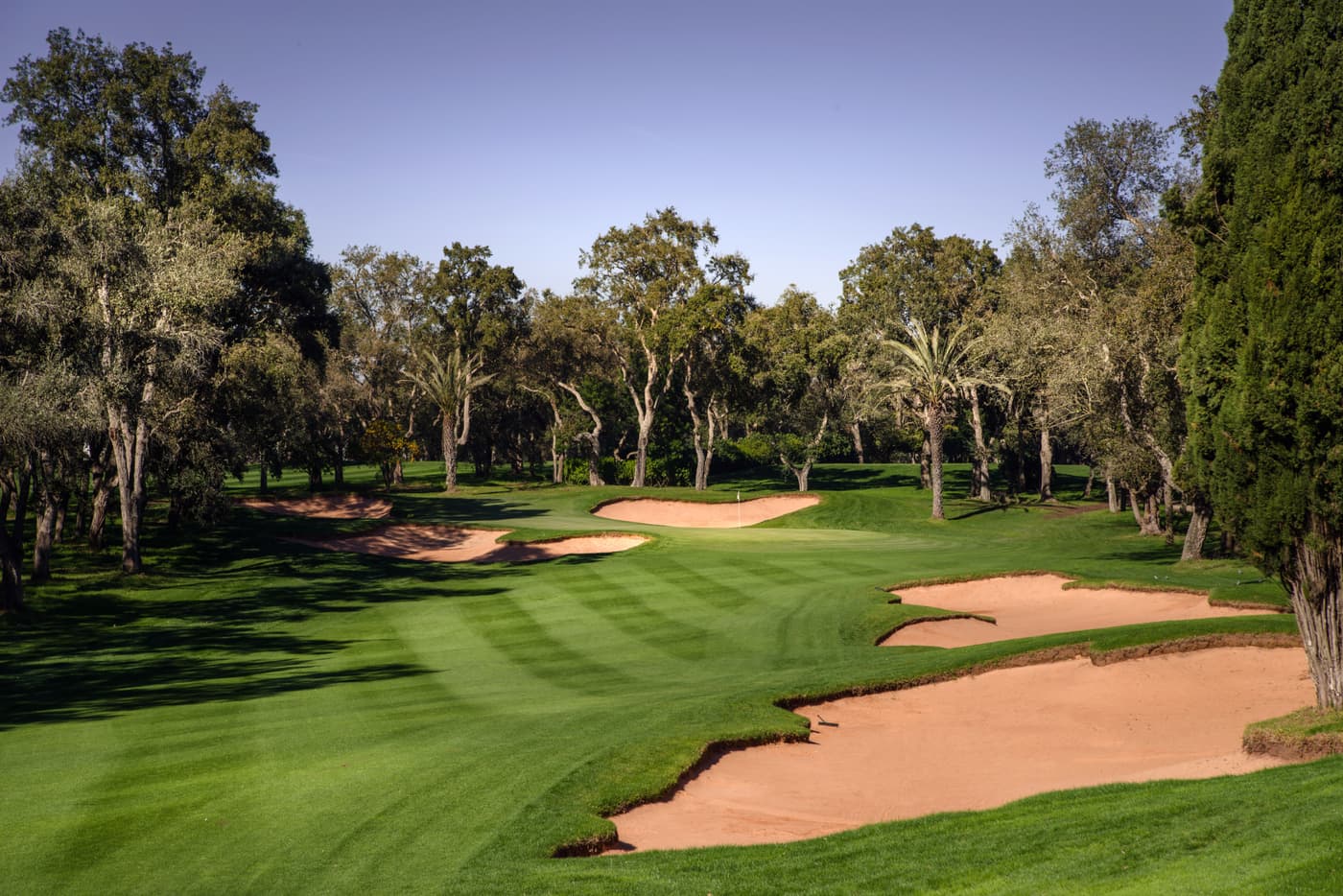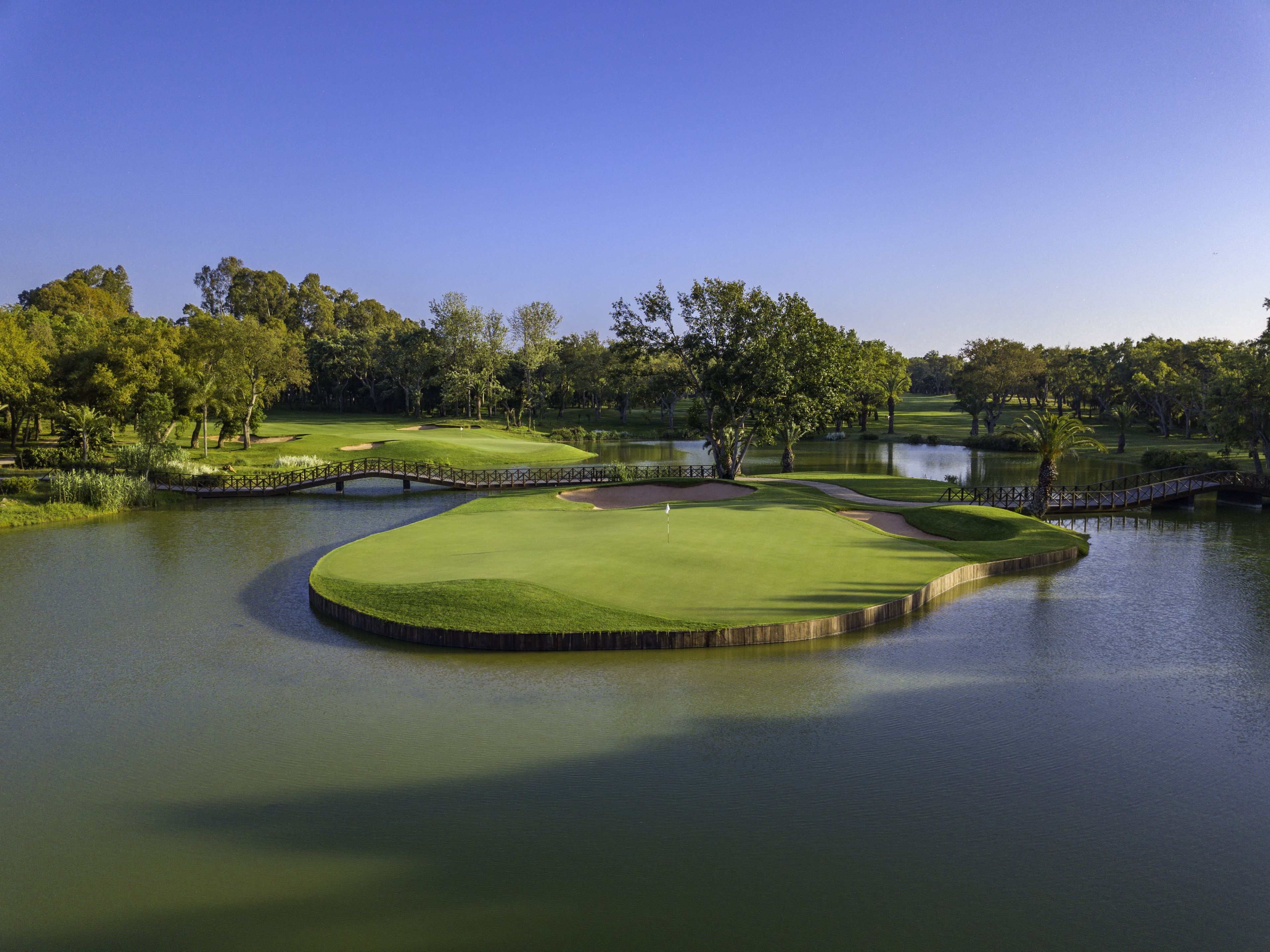
Royal Dar Es Salam (Red)
Rabat, Rabat-Salé-Kénitra
- AddressW598+J97, Av. Mohamed VI, Rabat, Morocco
Morocco’s King Hassan II – a real golf enthusiast – commissioned American-based architect Robert Trent Jones to design Royal Golf Dar Es Salam in the late 1960s on a massive 1,000-acre site located a mere fifteen minutes to the south of Rabat, Morocco’s Atlantic coast capital.
The result was that three layouts were carved out of the Zaers forest, creating one of the top golf venues in all of Africa. The 18-hole Red is the toughest of the three tracks at Dar Es Salam, measuring a whopping 7,372-yards with a par of 73. The 18-hole Blue course is less demanding but testing nonetheless whilst the 9-hole Green circuit has been designed for a more relaxing game of golf.


“The specification for Royal Rabat exactly matched his style,” wrote Pat Ward-Thomas in the New World Atlas of Golf. “It was to be a course fit for a king – Hassan II of Morocco, the most enthusiastic golfer among contemporary royals.
The tingle of anticipation, which every true golfer feels on approaching a course, begins at Rabat with a salute from the guard at the imposing mosaic gatehouse. The drive to the clubhouse makes its way through the stands of cork oak from which Jones carved the course, and the visitor’s first feeling of anticipation is tinged by a more guarded feeling, almost of trepidation; he will come to an intimate familiarity with the cork oak, with its drab, olive green leaves, gnarled branches and trunks that are stripped annually of their outer layer of bark, leaving them smooth, pink and bare. (They are blushing for their nakedness, as the Spanish saying has it.)”
RTJ certainly pushed out the boat when designing the Red course. Apart from the customary splashed bunkers, doglegged fairways and raised greens to be found on most of his layouts, he also shipped in some Roman column ruins – found between holes 11 and 12 – from the ancient city of Volubilis.
The signature hole on the property is undoubtedly the par three 9th where the tee shot has to carry a lily pond, complete with wading flamingos, to a shallow island green surrounded by flowers and trees – definitely one for the camera.
The Red course hosted the 11th (and so far last) Moroccan Open in 2001 when Ian Poulter claimed his second European tour victory with a 15 under par total of 277. Previously, the event had been held here three times – 1987 when Howard Clark came first, 1992 when David Gilford triumphed and 1996 when Peter Hedblom won.
The Hassan II Golf Trophy has been played for annually since the Red opened in 1971 and even though it was partly a pro-am event with celebrities involved, the list of winners is still quite impressive. In the 1970s, the names of Peter Townsend, Lee Trevino and Billy Casper were engraved on the trophy while, in more recent times, Sam Torrance, Padraig Harrington and Ernie Els have all walked away with the main prize.
In 2010 the Trophée Hassan II made its debut on the European Tour (Morocco becoming the second African nation to host a European Tour event after Tunisia in 1982) when Welsh rookie Rhys Davies lifted the trophy, claiming his maiden European Tour title in the process. The following year, the competition moved to Golf du Palais Royal d’Agadir, where it remained for five years. The competition moved back to the Red course in 2016, with the Lalla Meryem Cup tournament on the Ladies European Tour taking place at the same time on the Blue course.
A Red course renovation project led by long-time Coore & Crenshaw senior associate James Duncan (working in partnership with His Royal Highness Prince Moulay Rachid) began in 2016 with fairway bunker modifications, followed by fairway widening and then concluding with the rebuilding of all eighteen green complexes.
Duncan apparently discovered that the RTJ drawings for the Red course in the archive at Cornell University depicted a set of greens that were far larger than those that actually existed. As Jones never saw the greens after they were constructed in the late 1960s, the presumption was that they were not built to exact specification. They’ve now been enlarged quite considerably and are significantly more contoured than the old putting surfaces. Consequently the 2018 Trophée Hassan II event presented a rather unfamiliar test for the European Tour pros who'd played in previous tournaments. At the end of 2021, it was announced that the event would feature on the PGA Tour Champions schedule from 2022 onwards.
Course Reviews
Leave a Review
This course has not been reviewed.
If you have played this course, consider .
Thanks for the review
Your review has been successfully submitted and will be reviewed for approval.
Course Reviewed
You’ve already submitted a review for this course.
Course Architect
View All
Robert Trent Jones arrived in New York aboard the steamship Caronia from Liverpool on Monday, 29th April 1912, exactly two weeks after the Titanic had sunk on her maiden voyage across the Atlantic.
